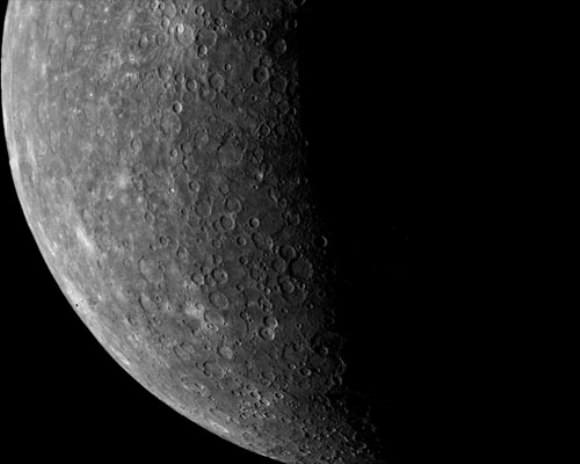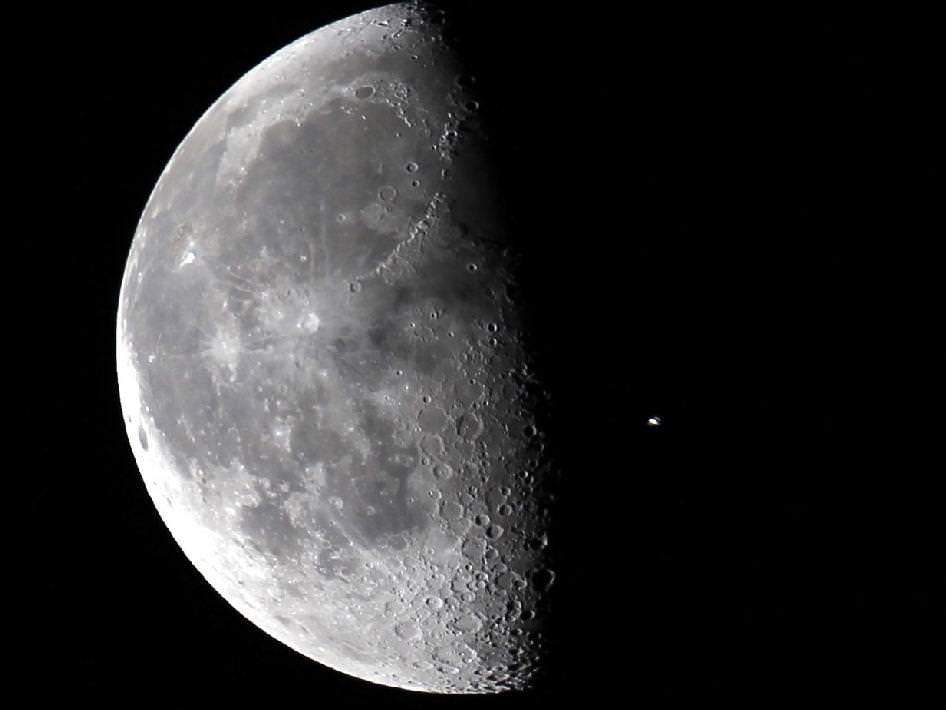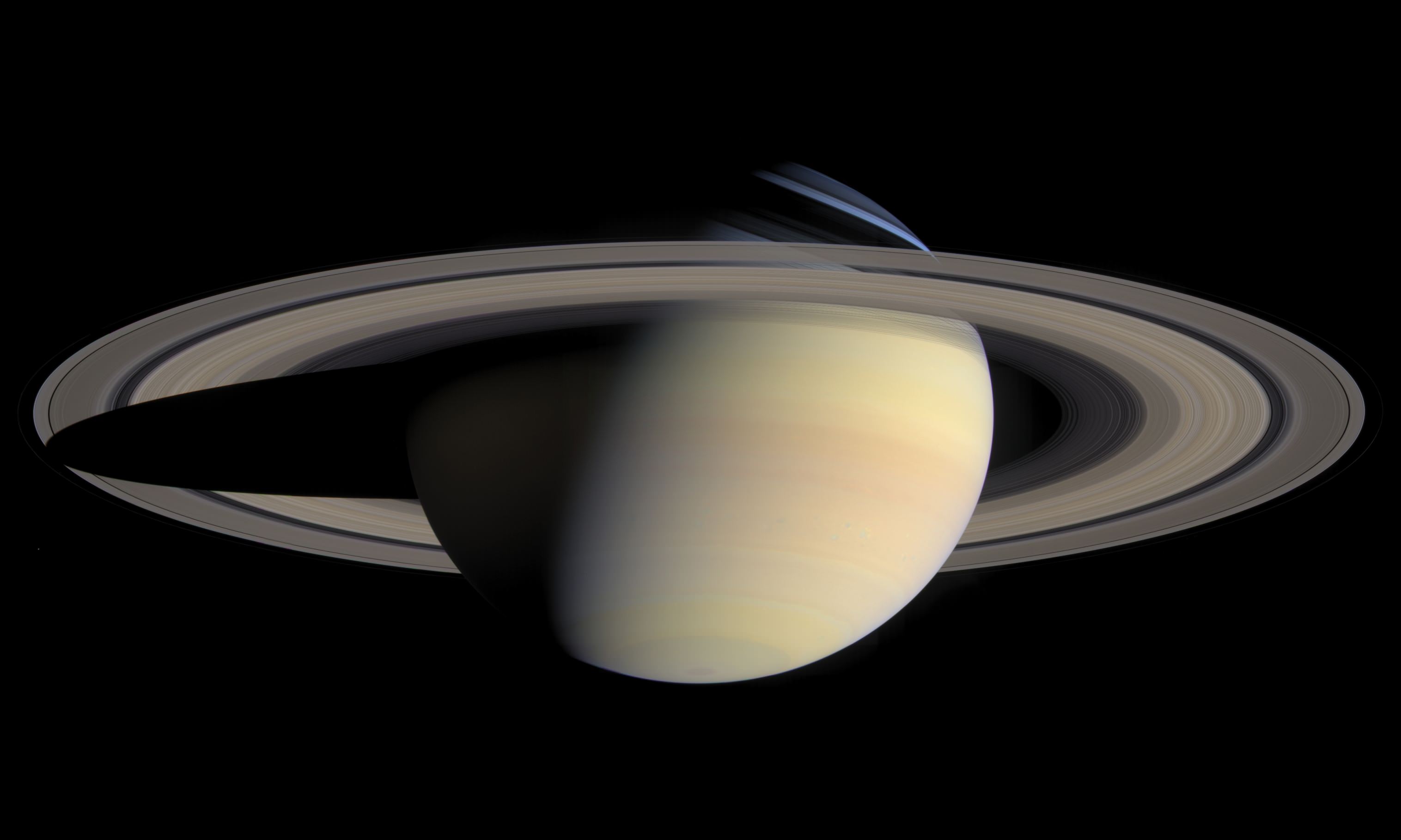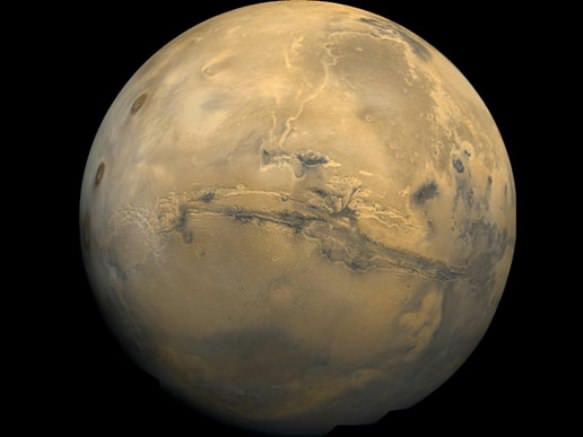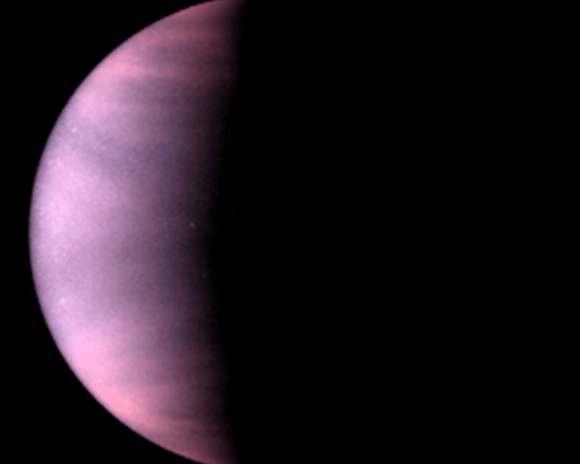[/caption]
The first planet from the Sun is Mercury, orbiting the Sun at an average distance of 57.91 million km. It’s also the smallest planet in the Solar System, measuring just 4,879 kilometers across. Mercury is named after the Roman god of commerce; he was the same entity as the Greek god Hermes – the messenger of the gods.
Mercury is a desolate, sun-baked world pockmarked by impact craters. It lacks any atmosphere, so the intense heat from the Sun escapes back into space on the planet’s night side. At noon on Mercury’s equator, temperatures can rise to 700 kelvin (426 °C), but on the night side of Mercury, it dips down to 100 kelvin (-173 °C). But Mercury isn’t the hottest planet in the Solar System; that’s actually Venus – its heat-trapping atmosphere boosts its temperature to 735 kelvin (461 °C).
Early astronomers didn’t even realize that Mercury was a single planet. They thought that it was actually two separate planets; one for when Mercury was seen after sunset, and another object for when it was seen in the morning before sunrise. Even the first rudimentary telescope couldn’t resolve the surface of Mercury, and it wasn’t until the first mission to pass Mercury in 1974, that astronomers could really see what Mercury looked like.
Mercury takes 88 days to complete one orbit around the Sun. Compare this to Venus, which takes 224.7 days, and Earth which takes 365.25 days. Since Mercury is the first planet in the Solar System, it has the fastest orbit, and then each planet has a successively longer orbit. Mercury’s day is almost as long as its year; 58.6 days.
It’s the smallest planet in the Solar System, but it’s the second densest. It has a density of 5.427 g/cm3. This is just after Earth, with a density of 5.515 g/cm3. Astronomers think that Mercury has a large metallic core, surrounded by a rocky mantle and a thin crust of rock. It doesn’t seem to have any active volcanism, but there might still be some venting of gasses which cont into a thin atmosphere around Mercury.
Mercury has no rings or moons.
We have written many articles about the first planet from the Sun. Here’s an article all about Mercury, and here’s some additional information about Mercury.
If you’d like more information on Mercury, check out NASA’s Solar System Exploration Guide, and here’s a link to NASA’s MESSENGER Misson Page.
We’ve also recorded an entire episode of Astronomy Cast all about Mercury. Listen here, Episode 49: Mercury.


